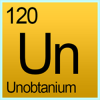Fogdog
Well-Known Member
I hear that experiments using this element promise that soon it will be commercially used to produce unlimited power from small doses of solar radiation reliably cheaply and most of all, it even transmits power to wherever you want to use it without wires or costly transmission lines.

It will wash your car too.

It will wash your car too.











